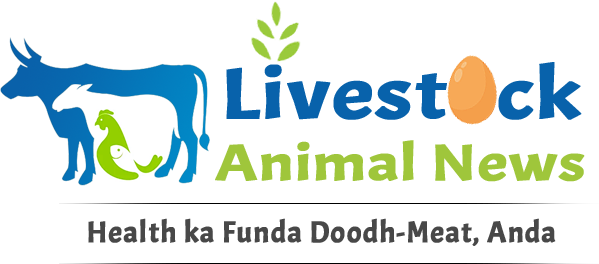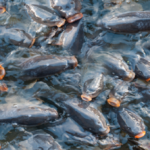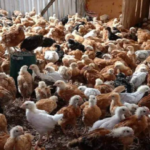Dr. Gowher Gull Sheikh, Scientist, Animal Nutrition, Mountain Livestock Research Institute, SKUAST-Kashmir
NEW DELHI. The Kashmir valley, with its lush alpine pastures, verdant meadows, and rugged terrain blessed with temperate weather, stands out as an ideal region for sheep rearing. This activity serves as a crucial source of income for numerous agrarian families, supporting approximately 1.2 million households. Sheep and goat rearing have deep roots in the valley’s history, with evidence from the renowned Neolithic site of Kashmir-Gufkkral indicating extensive domestication of sheep as early as the second millennium B.C. Benefiting from favorable agro-climatic conditions, abundant alpine and sub-alpine pastures, and other natural advantages, Kashmir offers immense potential for sheep farming. In this region, sheep farming is recognized as a lucrative venture, characterized by its capital-intensive nature rather than heavy reliance on labor. It plays a pivotal role in both food production and the livelihoods of marginalized communities and agro-pastoral farmers across the valley.
Transformation in Sheep Rearing Practices
In Jammu and Kashmir, sheep rearing historically belonged predominantly to tribal communities such as Gujjars, Bakerwals, Chopans, and Gaddies. Common local breeds like Gurazi, Karnahi, Bakerwali, and Poonchi were prevalent, albeit with limited productivity and profitability. However, the introduction of imported breeds such as Merinos, Corriedale, Dorper, Texel, and many others has brought about a rapid transformation in this sector. Today, there is a noticeable shift as educated youth from both rural and urban backgrounds are embracing sheep rearing as a viable source of livelihood. These forward-thinking farmers are implementing innovative rearing techniques and investing in modern housing and hygiene facilities. As a result, they are reaping significant dividends from this venture, marking a notable departure from the traditional practices.
Sheep: The Multifaceted Assets of Kashmir
Sheep are incredibly versatile animals, offering various products and benefits including wool, milk, mutton, manure, pelts, and regular lambing cycles twice a year. They require minimal investment, have short production cycles, adapt well to different environments, and are not subject to religious taboos, making them highly suitable for smallholder agriculture. Sheep serve as a valuable resource for risk mitigation during crop failures, allowing for monetary savings and investment opportunities. Their high fertility rates, short generation intervals, and ability to produce in resource-limited environments make them indispensable assets for farmers. Additionally, sheep play significant socio-economic and cultural roles within communities. In Jammu and Kashmir, there is a substantial local market demand for mutton, particularly due to its integral role in Kashmiri cuisine. At the national level, the region stands as the largest consumer of mutton and ranks sixth in sheep farming, boasting a population of 3.4 million sheep. Annually, Jammu and Kashmir contributes approximately 21.37 thousand tons of mutton, accounting for 3.15% of India’s total mutton production.
Mutton Demand and Production in Jammu and Kashmir
The demand for mutton is steadily rising, with an annual requirement reaching approximately 488 lakh kg. Presently, local resources contribute about 278 lakh kg (57%) of this demand, while the remaining 210 lakh kg is imported from other states, primarily Rajasthan, constituting 43% of the total supply. This substantial gap between demand and local supply presents a significant opportunity for investment in the sector to bolster production and bridge the deficit. In addition to mutton, Kashmir also produces approximately 32.75 lakh kg of wool annually. However, the demand for wool has been declining over time. The woolen sector faces various challenges, including fluctuating levels of sickness, which hinder its development. To address these issues, the Wool Board and Handloom sector in the valley need to overhaul their activities and diversify their product range based on the quality of wool and market demand. This strategic approach can help revitalize the wool industry and optimize its contribution to the region’s economy.
Government Initiatives and Collaborations
To meet the rising demand and address the supply deficit, the Government of Jammu and Kashmir initiated the Integrated Sheep Development Scheme in 2020-21. Under this scheme, sheep/goat units are established through a participatory approach. In a significant move towards achieving self-sufficiency in mutton production, the government approved a five-year project (2023-28) worth Rs. 329 crore in 2023. This project not only involves the importation of mutton breeds with high genetic potential but also incorporates artificial insemination using elite animal germplasm. The project aims to establish new commercial breed-based farms, mandis, Common Facility Centers, Farmer Producer Organizations, Self-Help Groups, and more. The Department of Sheep Husbandry has been actively engaged in providing support by offering 25 ewes/does free of cost to entrepreneurs, thereby incentivizing sheep farming as a lucrative entrepreneurial venture in Kashmir. In a significant development, the government has signed a memorandum of cooperation with New Zealand to revamp and modernize the sheep husbandry sector. This collaboration includes technology transfer, research initiatives, and other exchanges to enhance productivity and efficiency. Furthermore, NABARD provides subsidies ranging from 25% to 35% on the total cost for establishing sheep units of 100 animals, facilitating the expansion of the sector. Additionally, the Tribal Affairs Department, Central Wool Development Board, and agricultural universities play vital roles in supporting sheep farming families through skill development training, financial assistance, infrastructure development, and access to marketing opportunities.
Challenges Facing Sheep Husbandry
Sheep husbandry in the region encounters several challenges, primarily stemming from the shortage of quality feeds and fodders. Productivity is further hampered by prevalent diseases, inadequate infrastructure, insufficient breeding coverage leading to low conception rates, and high morbidity and mortality rates among the sheep population. The natural alpine and subalpine pastures nestled in the mountains of the Kashmir valley serve as crucial economic feed resources for livestock grazing. However, alpine pastures, situated at higher altitudes, are available for grazing only for about 4-6 months annually due to snow cover during the rest of the year. In contrast, subalpine pastures, found at relatively lower altitudes, offer a longer grazing period. Despite witnessing over sevenfold improvement in production since 1950 (from 2.33 lakh to 17.64 lakh), the sheep sector in the Kashmir region still struggles to meet the ever-growing human needs. Despite advancements, the sector continues to face significant challenges in achieving sustainable growth and meeting the burgeoning demand for sheep products.
Pathways to Strengthening the Sheep Industry
Jammu and Kashmir possess significant potential to make a substantial contribution to the sheep industry, both on the national and global scale. This activity holds immense importance as it has the capacity to bolster the economy of J&K and create fresh opportunities for employment and livelihoods. Implementing a planned and consultative approach with the involvement of relevant departments and experts can harness the rich legacy of sheep husbandry for improved livelihoods and sustainability in Kashmir. Here are some crucial steps needed for the economizing and development of the sheep sector:
Breed Improvement: Identify farmers/breeders with elite germplasm and disseminate it among traditional farmers.
Registration and Performance Evaluation: Register farmers and evaluate germplasm performance at the district level. Evaluate elite germplasm under farm conditions and improve it through the Open Nucleus Breeding System (ONBS).
Conservation of Indigenous Germplasm: Urgently conserve and preserve indigenous germplasm, which should serve as the baseline for breed development.
Addressing Feed and Fodder Scarcity: Conduct comprehensive studies on the availability and biomass yield of Common Pasture Resources for strategic sector development. Adopt concepts like fodder banks and nutritional technologies to overcome the challenges posed by winter, which accounts for around 70% of production costs.
Revamping Wool Sector: Utilize the 32.75 lakh kgs of wool produced in Kashmir by revitalizing activities in the Wool Board and Handloom sector. Diversify product ranges based on wool quality and market demand.
Promoting Economic Activities: Encourage entrepreneurship beyond meat and wool production. This could include establishing shearing units, wool processing units, product diversification/development units, meat and meat product facilities, slaughterhouses, composting/vermicomposting units, feed mills, UMMB (Upland Mountainous Belt), and fodder block units.
Developing Marketing Channels: Establish proper marketing channels to ensure better remuneration for farmers in accordance with their production costs. Collaboration with NGOs, Self-Help Groups (SHGs), Farmer Producer Organizations (FPOs), and government initiatives can aid in price fixing to ensure farmers receive their fair share in a demand-driven market.
DISCLAIMER: The views and opinions expressed in this article are the personal opinions of the author.
















Leave a comment